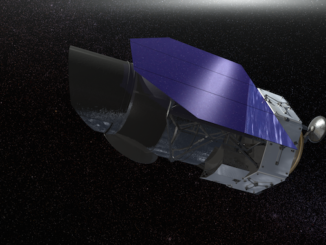
The Transiting Exoplanet Survey Satellite – TESS – has completed its initial survey of the southern sky, collecting 20 terabytes of data that include 29 confirmed exoplanets, more than 1,000 candidate worlds, a comet and numerous supernovae.
To mark the completion of the southern survey on 18 July, researchers at NASA’s Goddard Space Flight Center in Greenbelt, Maryland, have assembled a mosaic of 208 images take from 15,347 30-minute exposures captured during the spacecraft’s first year of operation. The panoramic view shows the Milky Way stretched edge on across the southern sky, the Large and Small Magellanic Clouds and countless stars.
The Goddard video below shows how the mosaic was assembled and the locations of confirmed and candidate exoplanets found to date:
TESS is now mapping the northern sky, using four cameras with a total of 16 charge-coupled devices to look for the slight dimming of starlight that occurs when an exoplanet passes in front of its host sun as seen from Earth’s solar system. Researchers are still reviewing data captured during the first year of operation and working to confirm the status of more than 1,000 exoplanet candidates discovered to date.



